
I don’t know about you, but I find it physically impossible to walk past dahlia patches and not stop and admire them.
I’ve been known to travel far and wide for dahlia shows and I have a dahlia wish list that spans over multiple pages.
How could anyone not like dahlias? They bloom in a wide rainbow of hues (every color you can think of, except blue) and the blooming range spans from early summer all the way to late fall.
But these beautiful primadonnas often require a bit more TLC than other fall bloomers in your garden. And sometimes, dahlias simply don’t produce enough blooms or have a really late start to the season.
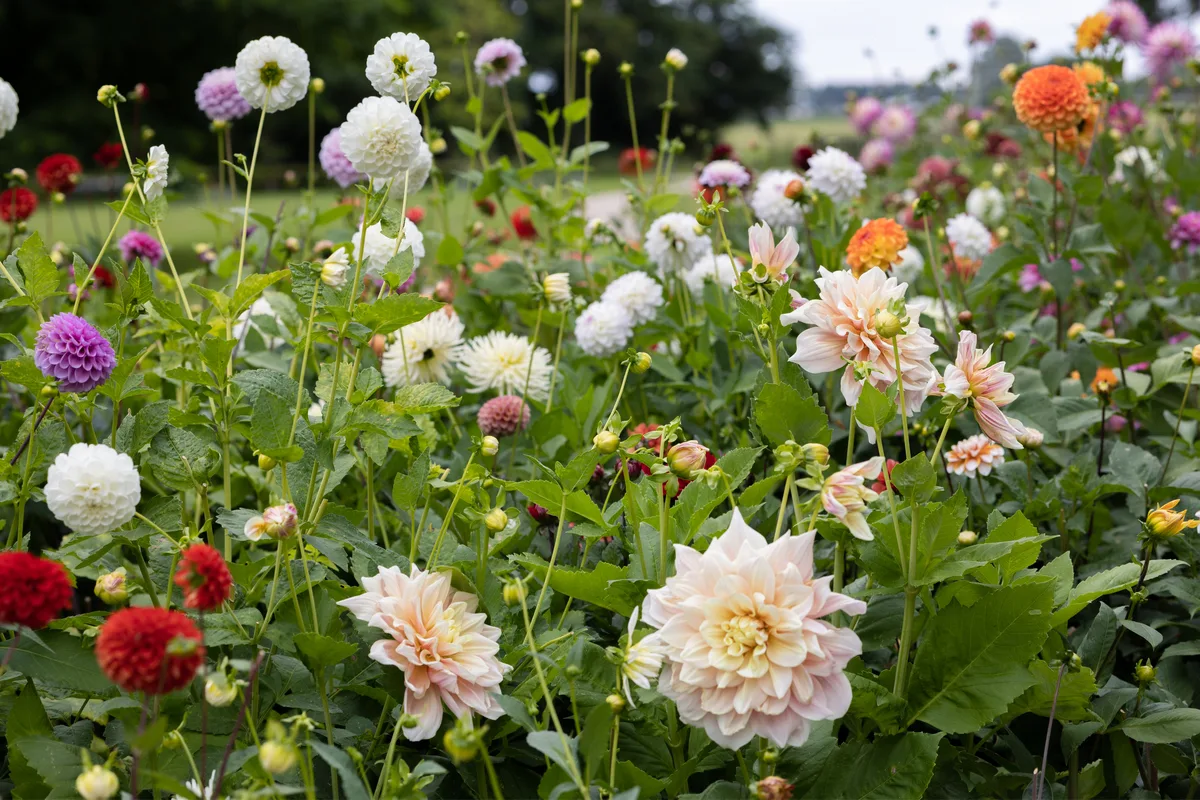
It’s almost as if you have to toil in advance in order to get your dahlia reward.
If you’ve made it to the middle of your growing season and your dahlias still aren’t showing any sign of blooming, or if they are putting out buds, but the flowers are small and lack vigor, here are a few factors that might have gone wrong. I’ll also include a few suggestions on how you can fix things to make these divas happy and get more dahlia blooms.
1. Your dahlias haven’t been getting enough water.
Dahlias are thirsty customers. If you’re looking for a low-maintenance carefree garden and you live in a climate that gets hot and dry in the summer, dahlias may not be the right plant for your desired gardening style.
The lack of proper water is often the main reason why dahlias aren’t blooming to their full potential. And in this case, it’s not just a matter of not blooming at all, but also of the plant becoming leggy and spindly due to experiencing drought stress.
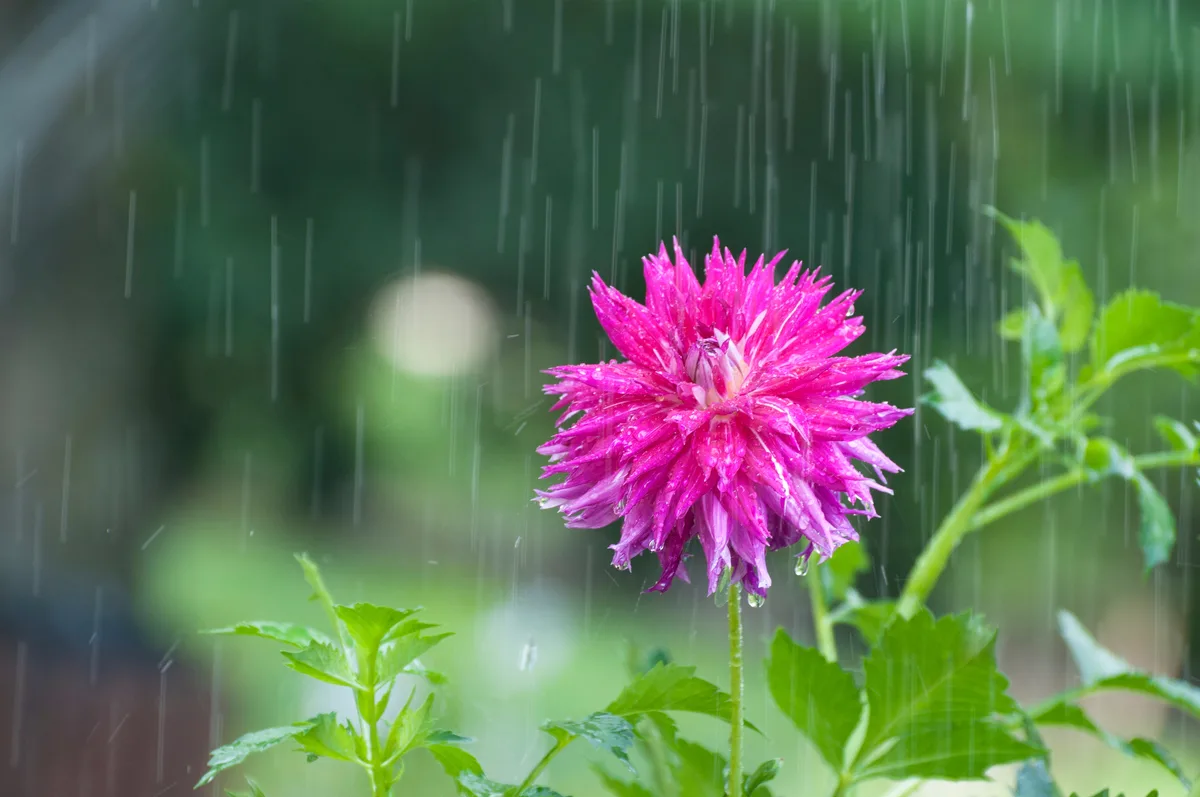
So when and how much should you water your dahlias?
Refrain from watering dahlias after you’ve just planted the tubers in spring. Tubers that are kept constantly moist are more likely to develop rot. In most (micro)climates in the Northern Hemisphere, spring rainfall is sufficiently abundant to keep the tubers well watered. But if you live in an area that gets warm and dry springs, you can water around the tubers about once a week until the leaves have emerged.
However, it’s a different ballgame during the summer months. As soon as your dahlias have started growing foliage, you should start watering them more. Increase your watering routine, both in terms of quantity and frequency, as the plant grows and develops. Think of it in terms of feeding a baby (just the tuber) compared to feeding a hollow-legged teenager (dahlias that are about to bloom).
If you’re not getting sufficient rainfall in the summer – and by that I mean downpours that penetrate deep into the soil, not just mild showers – you should be watering your dahlias at least three to four times a week. And you should be watering them every day in a heatwave.
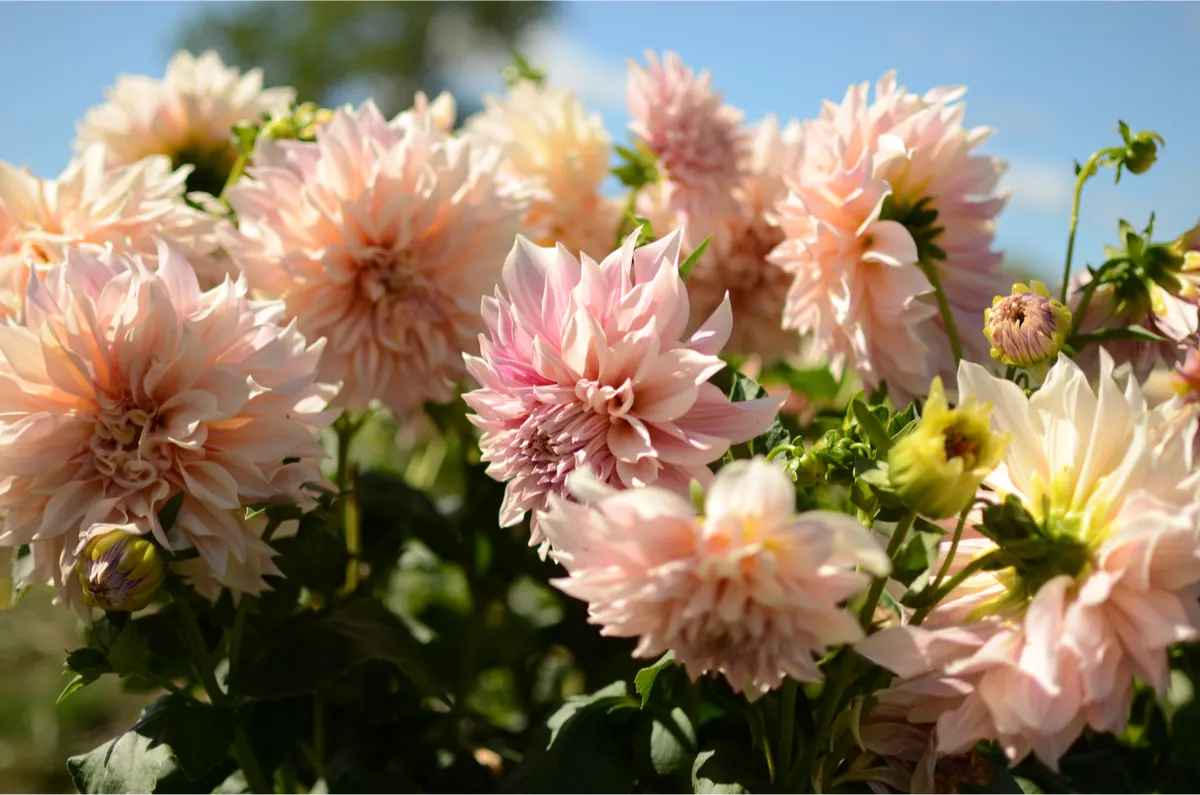
As dahlias grow deep roots, the plants won’t be content with shallow surface watering. You should deep-water your dahlias, making sure that the water reaches at least eight inches below ground level. Often, using a watering can or a sprinkler will not be enough to get the water that deep, so you can either use just the spout on your watering can, a soaker hose or a bucket.
Generally, the dwarf varieties of dahlias will need less water than the larger, taller varieties. The so-called dinner-plate cultivars will get very thirsty very fast.

When you water your dahlias, try to keep the water off the leaves and the blooms because damp foliage becomes more prone to developing powdery mildew and other fungal diseases.
It sounds like a lot of work, doesn’t it? But you’ll be rewarded with beautiful dahlia blooms because you’ll be relieving the plant from the stress of having to conserve moisture during a drought-prone summer.
One way to make this task easier on yourself is to make sure you mulch your dahlias to slow down water evaporation and keep the soil temperature cool and even. You can mulch your dahlias with bark (always choose undyed bark), straw, pine needles, leaf mold or grass clippings. A three-inch-deep layer of mulch should be enough even for the tallest dahlia varieties.
2. You have a late-blooming dahlia cultivar.
It takes dahlias about 90 days to bloom from the time you’ve planted the tubers. But that’s just an average. Smaller dahlias might bloom after 75 days, while some take as long as 120 days.
In general, the low-growing varieties will take less time to bloom than the larger varieties (the blooms that get to a diameter of about eight inches or larger).
If you’re buying dahlias, always check the label for the expected bloom time. Of course, this is just a guideline that is usually influenced by factors such as the amount of sunlight and water your plants are getting as well as how nutrient-rich your soil is.
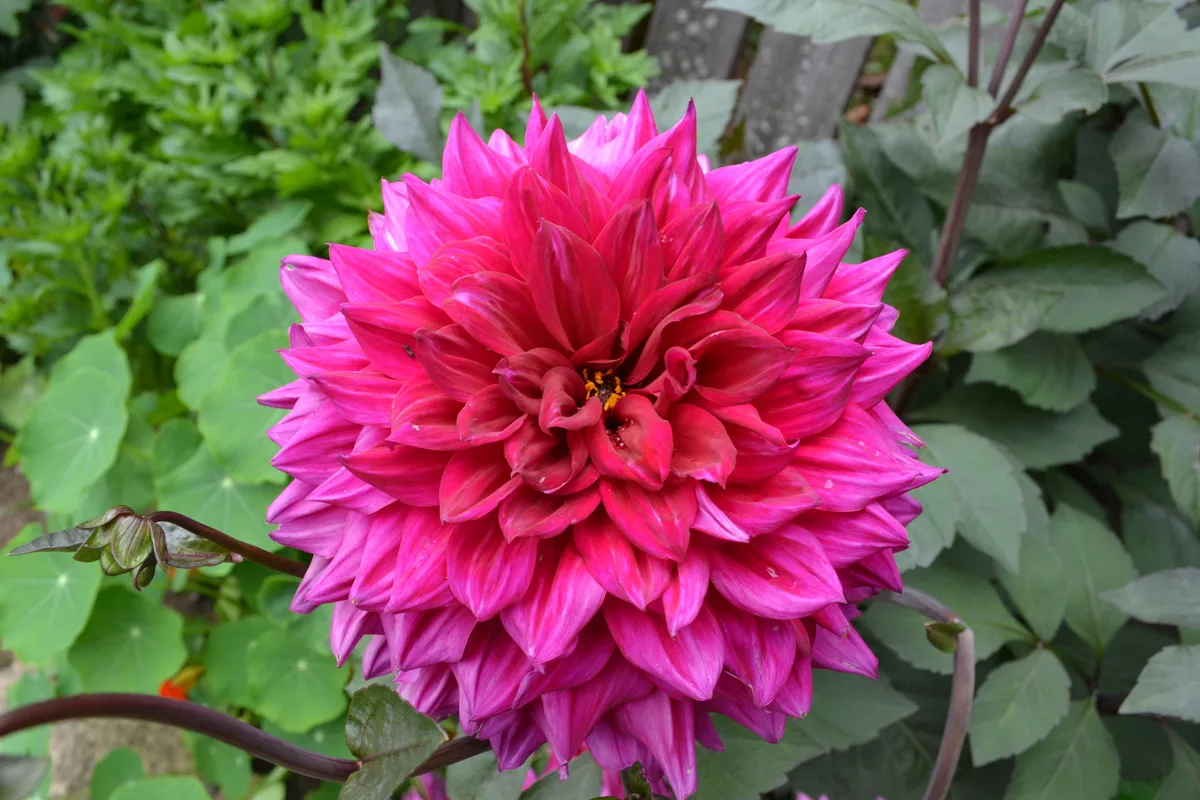
For a more balanced look in the dahlia patch, and to extend the blooming season, you can interplant taller and shorter varieties together. Always make sure that the tall ones will not cast a shade on their smaller counterparts.
The advantage of choosing late-blooming dahlias, if you can muster up the patience, is that they will keep blooming until the first frost hits. So even if your dahlias decide to bloom as late as September, you can still enjoy a good six to eight weeks of colorful dahlia takeover in your garden.
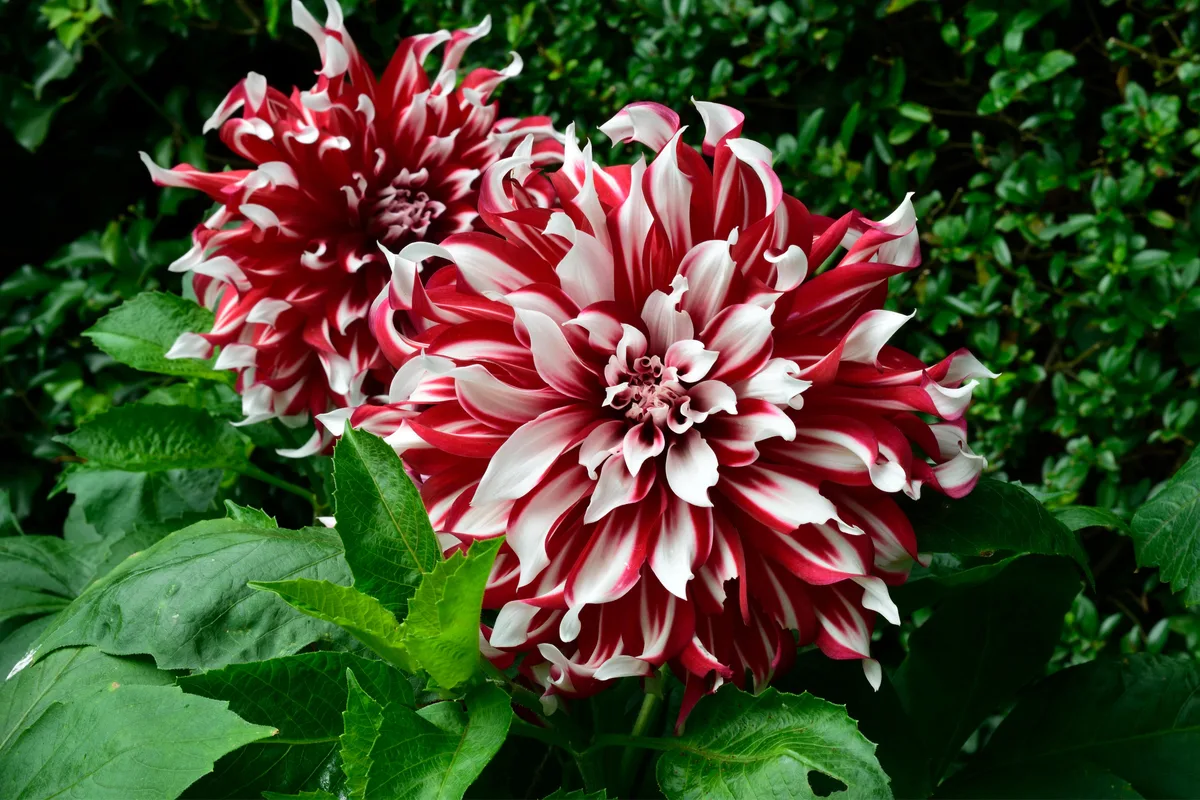
3. You planted your tubers too early.
Both the dahlia tubers and the mature plants are sensitive to cold weather. It’s only natural, since dahlias are native to Mexico and South America.
Although you may be tempted to plant dahlia tubers at the same time you put your spring bulbs into the ground (February and March), that’s still too early for this plant. Dahlias need warmth in order to thrive, and they’ll only start sprouting once the soil temperature reaches 50F. So you should wait at least until the last frost before you plant your tubers outdoors, especially if you’re planting smaller ones.
The best piece of advice I read regarding timing came from the American Dahlia Society: plant dahlias outside around the same time you’d plant your tomatoes.
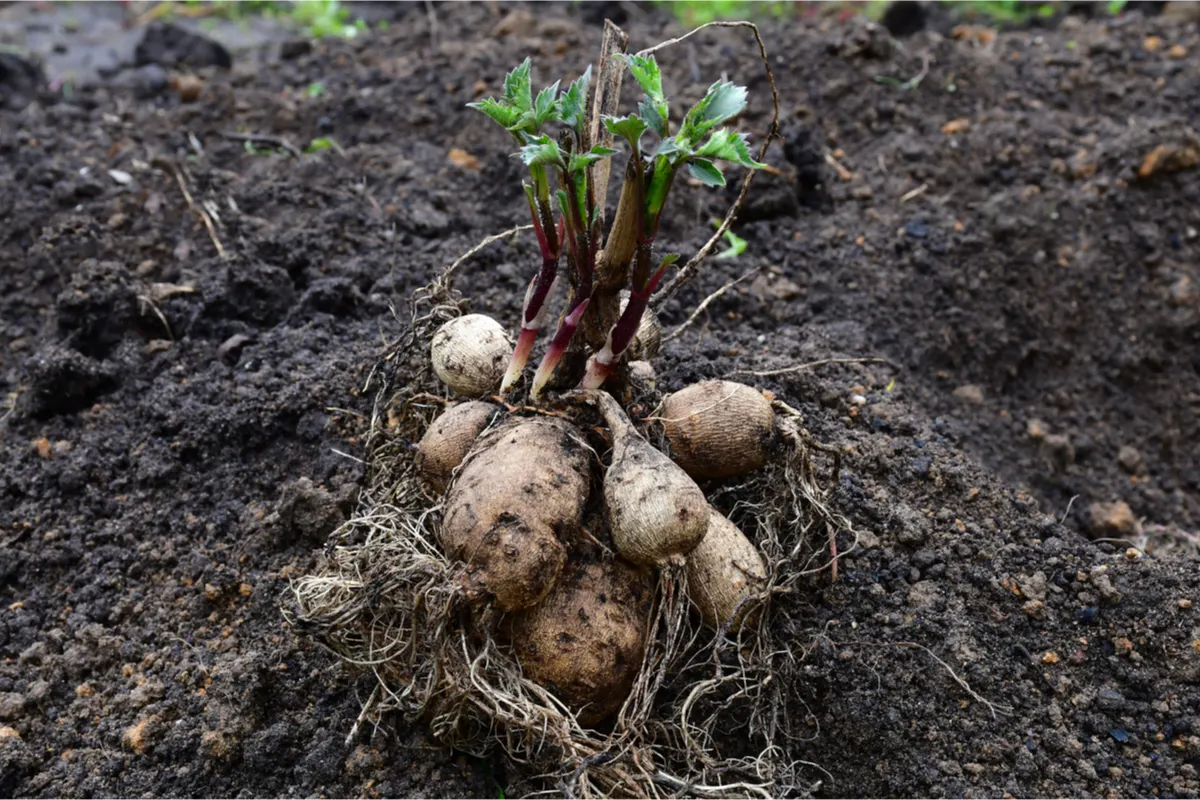
Another risk of planting your dahlias too early is having the tubers stand in waterlogged soil for too long. This usually happens in climates with very wet springs. This will lead to rot which will render your tuber unviable.
If you want to get a head start, especially if your growing season is short, you can start dahlia tubers in pots indoors. However, you will need to grow them in a location that gets enough sunlight and you have to resist the temptation of overwatering potted tubers. Again, only move the pots outdoors once the chance of the last frost has passed.
4. Your dahlias haven’t been getting enough sun.
Planting your dahlias in full sun is non-negotiable if you want them to reach their full blooming potential. In most climates, they will need at least six to eight hours of direct sunlight in order to put out abundant blooms.
If you’re in a climate that gets very hot in the summer and early fall, aim for a planting spot that gets this amount of sun in the morning. In the afternoon, the sun rays may get too hot and scorch the foliage.
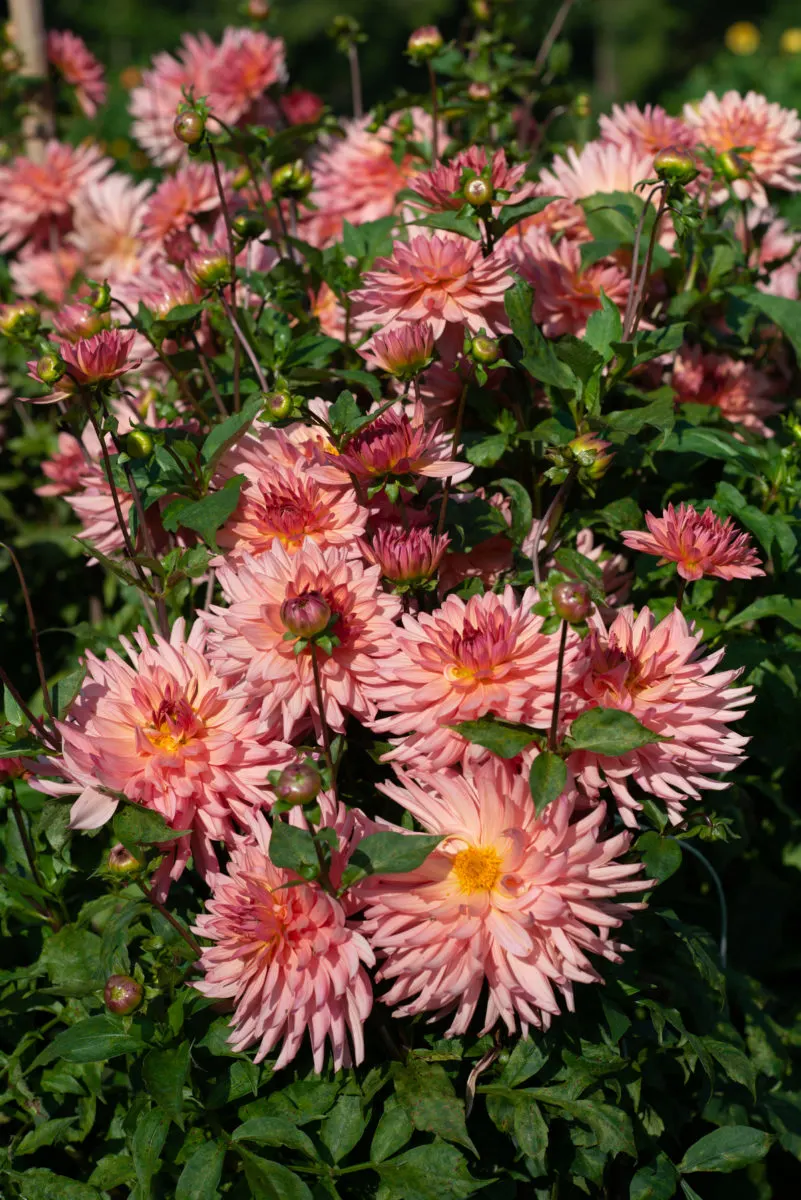
When you first decide on the location of your dahlia patch, pay close attention to what surrounds this spot and plan accordingly. Are there any structures (such as fences, pergolas or sheds) that could start casting shade soon? Are there any trees or shrubs that may start competing with your dahlias for water and sunlight? Will your dahlias have enough room to grow?
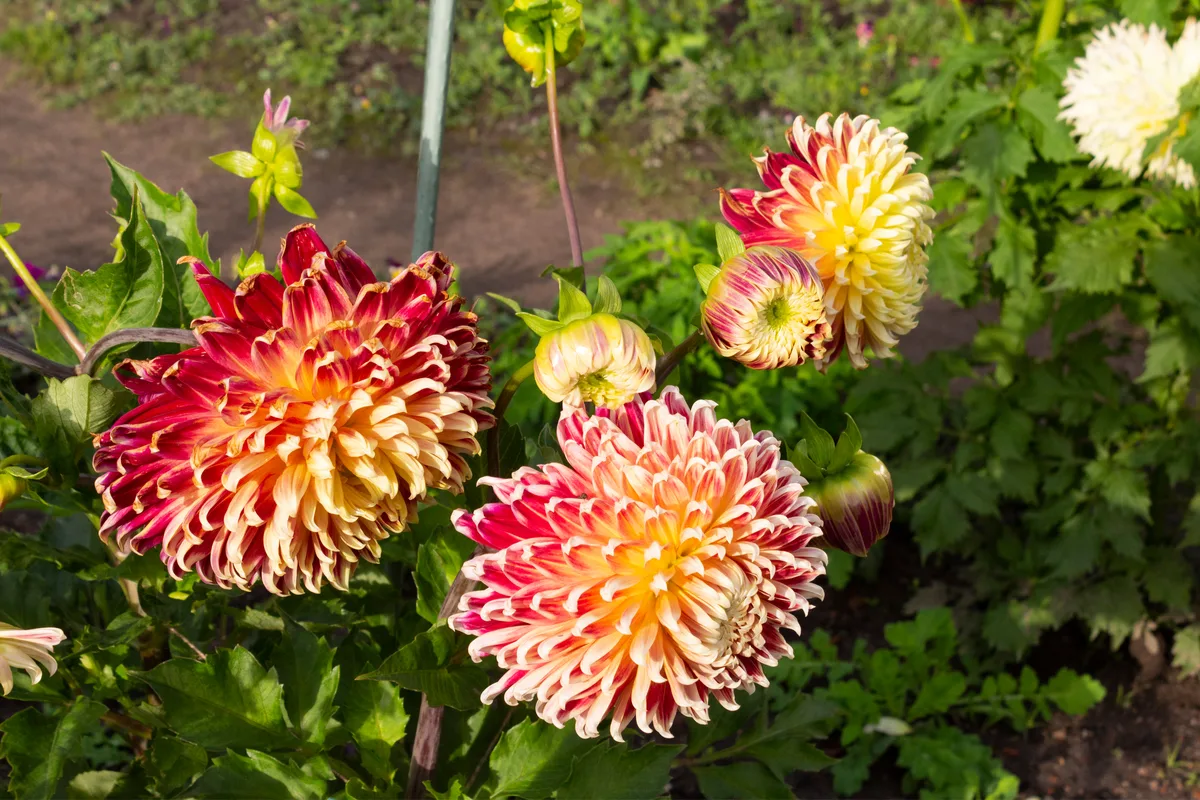
Plant dinner-plate varieties (pictured here ‘Akita’) further apart than petite varieties.
Take into consideration the fact that you should plant large dinner-plate varieties about three feet apart, and smaller varieties about two feet apart. You can place them closer together or further apart, depending on your preferred garden look, as long as you allow for good air circulation between the plants.
Don’t be discouraged if that much direct sunlight is hard to come by in your garden. You can still grow dahlias in part shade (never in full shade though), but the blooming won’t be as spectacular as that of plants grown in full sun.
5. You’ve planted your dahlias in heavy waterlogged soil.
Dahlias will thrive in well-drained loose soil with a pH that ranges from 6.0 to 7.0 (so slightly acidic, but not too much). They will not tolerate waterlogged sites and too much water pooling around the tubers may lead to poor-performing plants.
If your soil is heavy and rich in clay, you should add organic compost, sand, pine bark or leaf mold in order to improve your site’s structure. Be careful not to add too much fresh manure, as this may be too rich in nitrogen for a blooming plant.
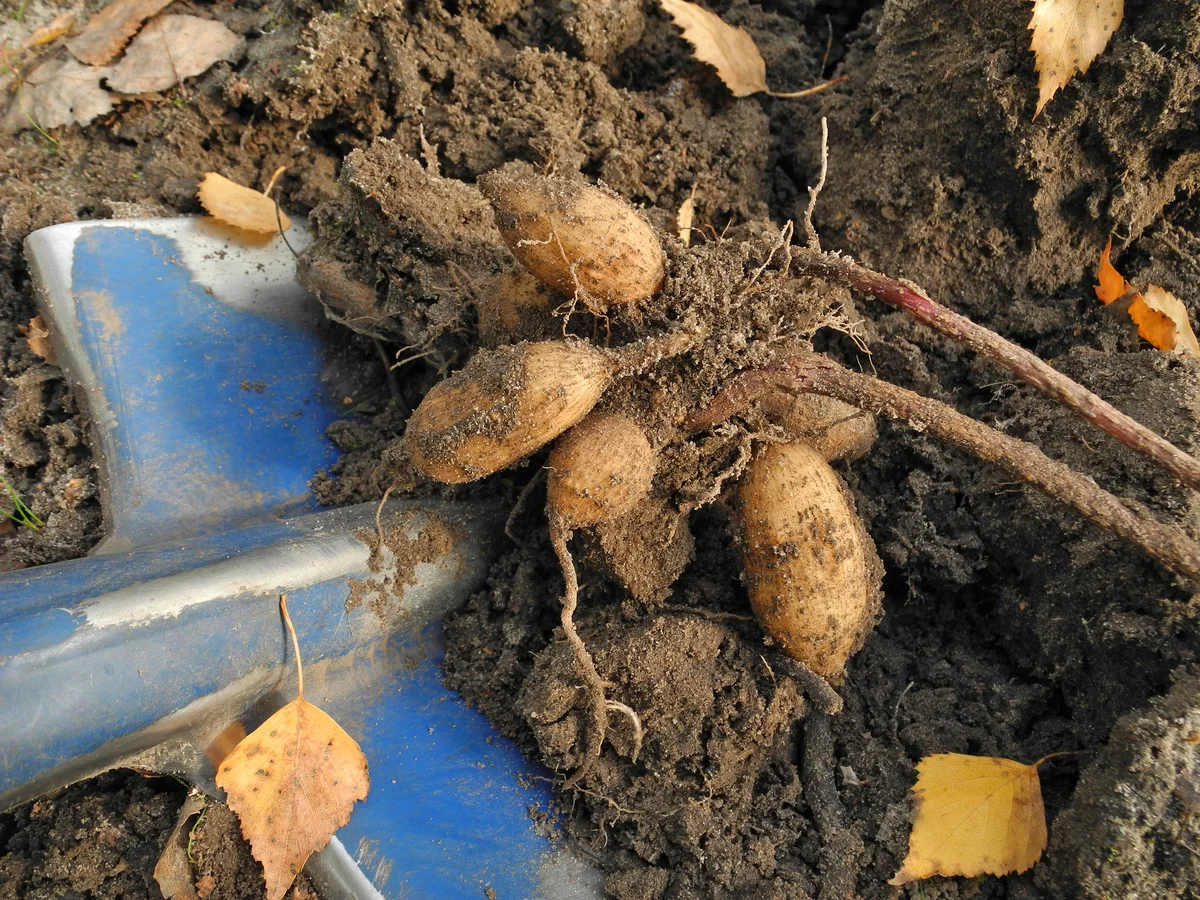
Plant your tubers at least three inches below the surface, making sure that the “eye” of the tuber is facing up. Before you place the tuber into the ground, amend the hole around 20 inches wide and 15 inches deep with organic compost.
All these nutrients will ensure that your dahlia tubers get a good head start in their first month in the ground.
6. You’ve been fertilizing your dahlias the wrong way.
Saying that fertilizing dahlias is a balancing act would be an understatement. With their lush foliage and their big blooms, dahlias are heavy feeders. And while they are big consumers of nitrogen, too much of it may lead to poor bloom. This happens because nitrogen is excellent for growth, but it encourages the plant to direct most of its energy into foliage development rather than on setting buds.
There’s no need to fertilize your dahlias when you first plant your tubers outdoors. But you should be amending your site so that the soil around the tuber is rich and well-draining. (Just like we described in point five above).
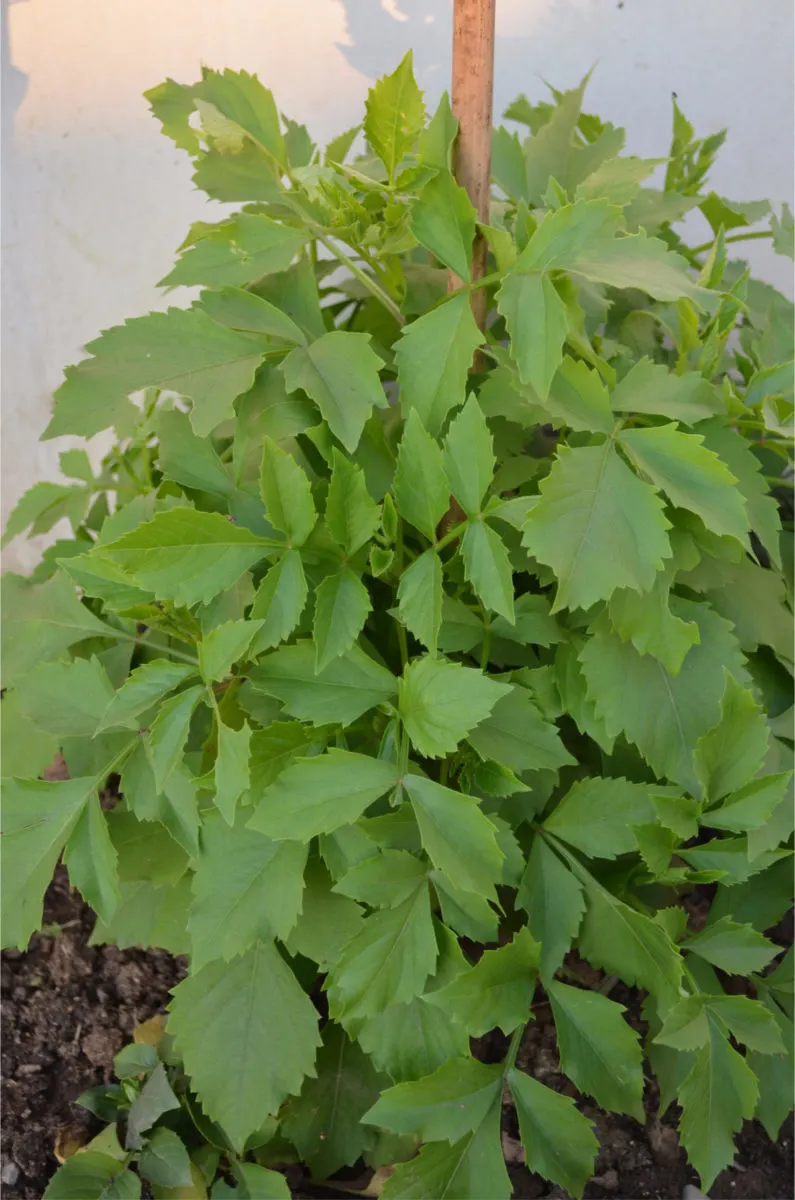
You can start fertilizing your dahlias in earnest about 30 to 45 days after you’ve planted them, depending on the growth you’re noticing on the plant. You can then continue to feed them monthly until about mid-to-late August (depending on when your dahlias are expected to bloom).
What kind of fertilizer do my dahlias need?
We recommend you use an organic fertilizer rather than a synthetic one. Organic fertilizers have come a long way in terms of their quality/price ratio and are now as affordable as synthetic ones. Not to mention that they’re better at improving your soil structure in the long term. Organic fertilizer can be made out of seaweed and kelp, worm castings and other plant-based and animal-based formulas.
Whatever you end up choosing, make sure it’s a low-nitrogen formula. You’ll know this by reading the N-P-K ratio on the packaging. The first number should be lower than the other two. For example, a 10-20-20 mix would be ideal for dahlias. You could also go for a slightly higher middle number, such as a 5-10-5 mix, that’s rich in phosphorus, an element that promotes rich bloom production.
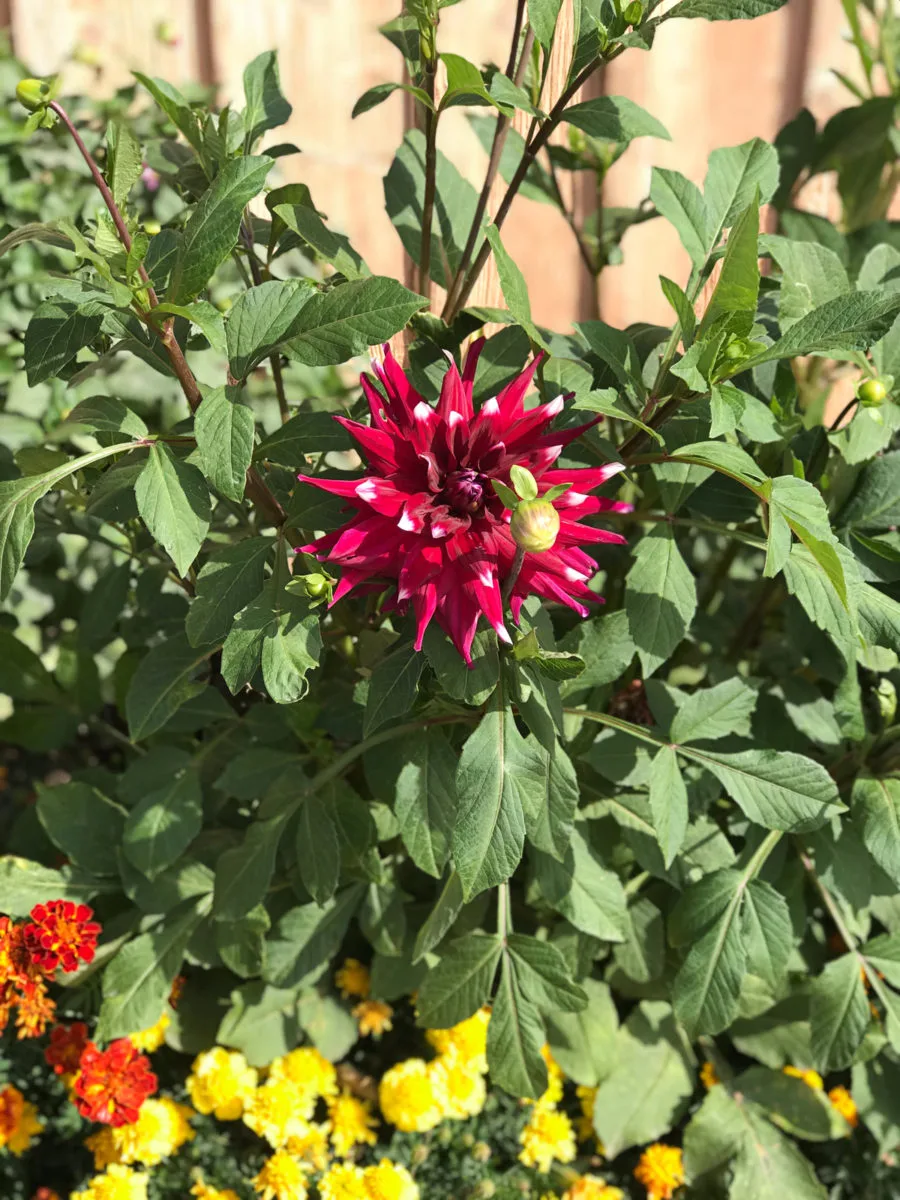
Every fertilizer formula is slightly different, so it’s best to always follow the instructions on the packaging, and err on the side of under-fertilizing your dahlias. You can always add more fertilizer, but you cannot extract it out of the ground once you’ve applied it.
Be warned that too much fertilizer may also lead to the tubers not storing well during winter. Don’t fertilize your dahlias too late into the season because you want to allow them enough time to wind down before going into storage for winter.
7. You started off with poor-quality tubers.
This happened to me a few years ago and I think it may be the case more frequently than we realize. I bought the dahlia tubers from a large garden store chain, but my excitement was soon dampened by the fact that only about half of the tubers sprouted leaves, and of the ones that did, even fewer got to the blooming stage.
So if your newly-planted dahlias are not flowering, and if you’ve worked through this list and eliminated all the other reasons, then you may have been dealt a bad dahlia hand.
If you’ve been saving your own dahlia tubers from previous years, do keep in mind that storing them the right way over winter really makes a difference in the quality of the plants you get the following season.
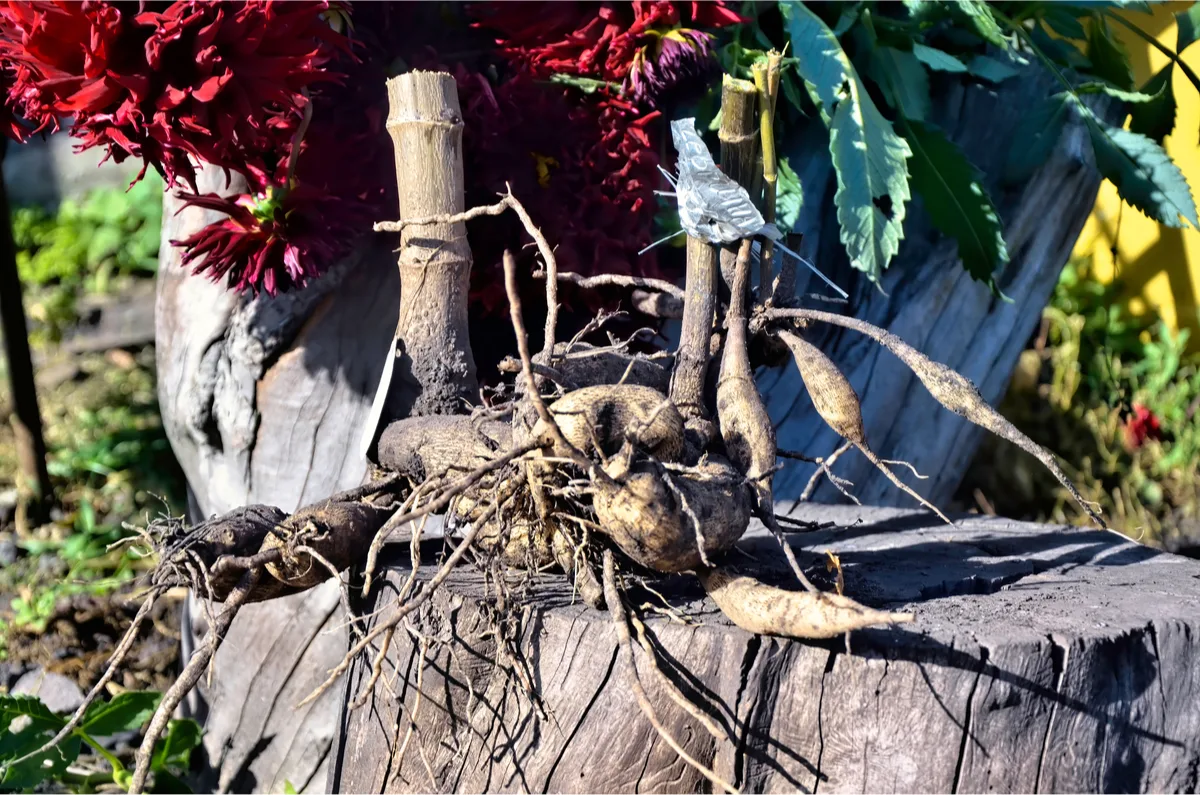
Allow dahlia tubers to dry out in the sun before you store them for winter.
Once you lift them out of the ground in the fall, you should allow them to dry really well before putting them away in a cool dry storage space. One of the best ways to store the tubers is in paper bags or cardboard boxes on a bed of either vermiculite, wood shaving or crumpled paper in order to absorb any of the remaining moisture in the bulb.
Even if you’ve done your best to store the tubers properly during the winter, you may still discover that some have molded, rotted or shriveled up. Don’t be tempted into planting them anyway because you’ll most likely be taking up the space in the garden and have zero results to show for it. Only put firm, hardy tubers in the ground and discard the ones that show signs of rot and the ones that have become papery and hollow.
Make sure that the tubers you end up planting have at least one “eye” on them, as that sprout is what grows into a mature plant.
8. You’ve been leaving your dahlias in the ground for years.
Just like all bulbs left in the ground year after year, dahlia tubers will eventually lose their vigor. The tubers will keep growing, but if they’re not manually divided, they will develop into an overcrowded clump that will gradually put out more spindly foliage and fewer blooms until it eventually stops putting out growth altogether.
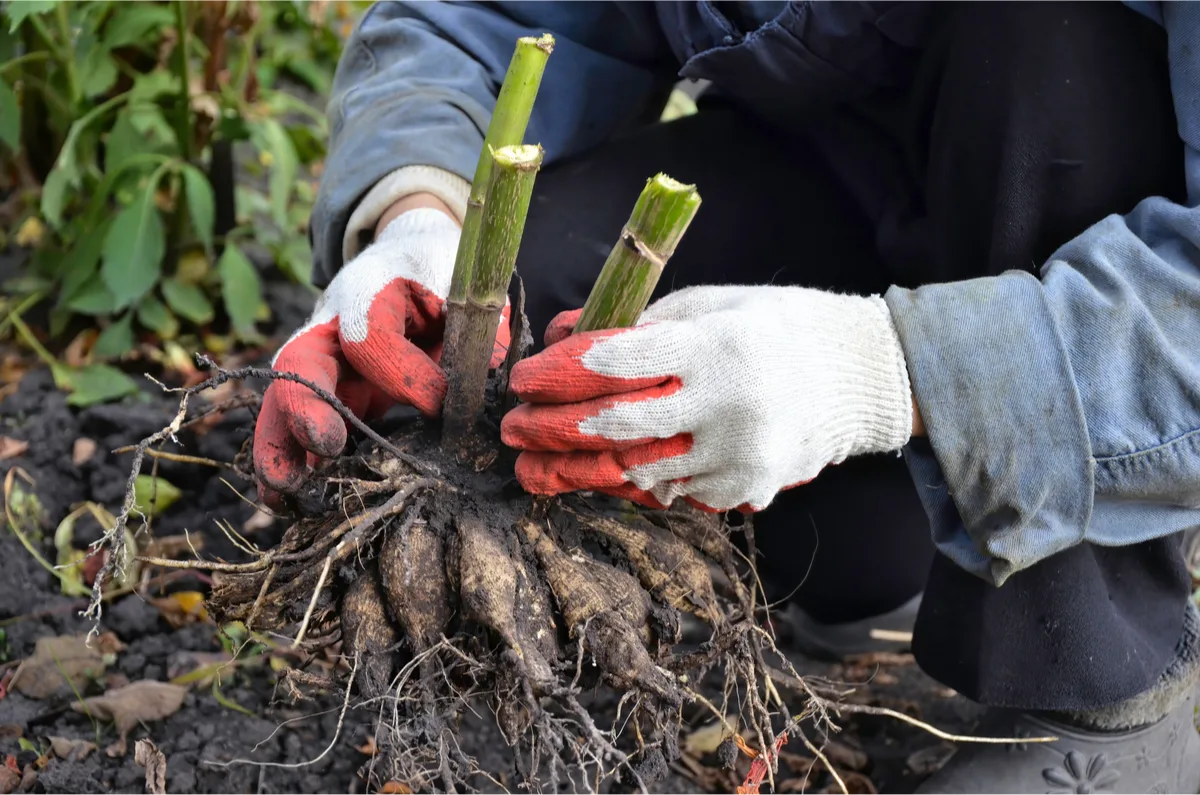
You may think that digging out and storing dahlia tubers every fall and then planting them back out in the spring is too much of a hassle. I readily agree. It’s a process that’s spread over several days (accounting for the days it takes the tubers to dry before you put them in storage). It can also be overwhelming on chilly fall days, especially if your dahlias have survived until the last frost. Digging out in the garden in the middle of a cold November day is not my idea of fun either.
In this case, my advice is to start adding new tubers to your dahlia patch every year in order to prevent it from becoming too sparse. Make a note of the spots where the old dahlias are thinning so you’ll know where to plant fresh tubers next spring. While you’re at it, you can mix and match the size of the dahlia varieties to extend your blooming season.
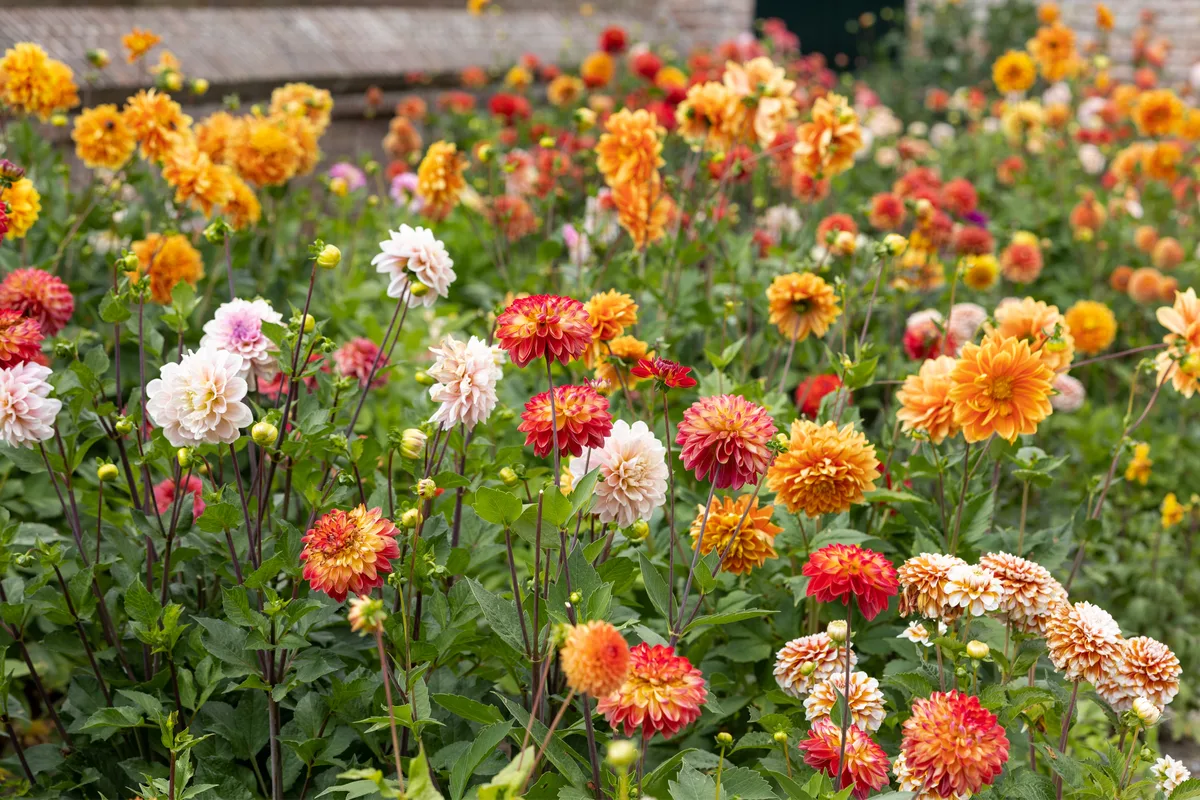
9. You forgot to disbud and deadhead your dahlias.
Dahlias are prolific bloomers. So prolific, in fact, that they put out more blooms than they can possibly sustain and feed. The more blooms your dahlia produces, the smaller the flowers you’ll get. In order to have one large flower on every stalk, you should get rid of some of the other buds before they open. This is where pinching and disbudding come in.
How do you pinch dahlias?
Pinching comes first in the dahlia pruning timeline, even before you see any flowers emerging. When the plant is still young, but has grown to about one foot tall and has already put out four pairs of leaves, gently remove the terminal shoot (the main shoot) to encourage more branching. This is when you should start staking your dahlias to ensure they have enough vertical support as they grow and get heavier.
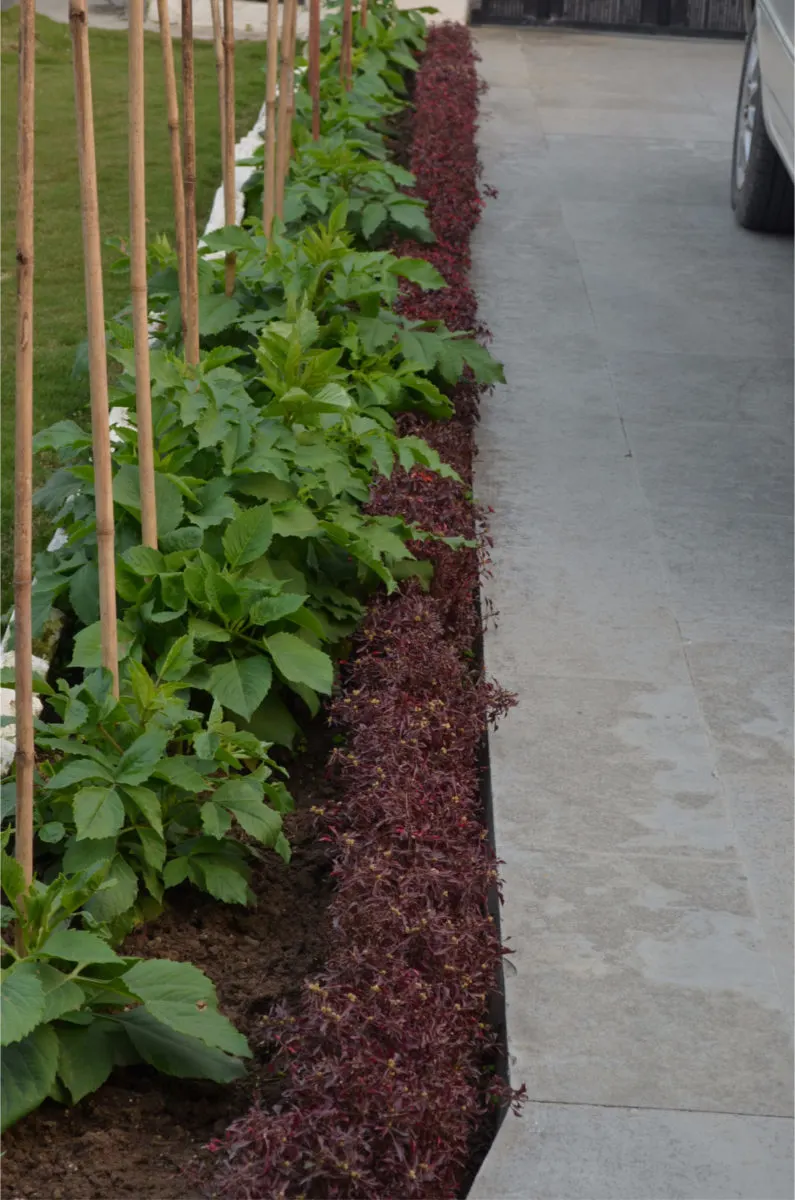
How do you disbud dahlias?
When the buds on a branch are about the size of a pea (roughly about a quarter of an inch in diameter) remove the smallest two buds and leave only the largest bud – often the central one – to keep growing.
Newbie gardeners are often reluctant to pinch and disbud their flowers. I know I was! But think of it this way: disbudding serves to refocus the plant’s energy towards a limited number of flowers. It’s the plant-world equivalent of a good allocation of resources. However, you can choose not to disbud small low-growing dahlia varieties.
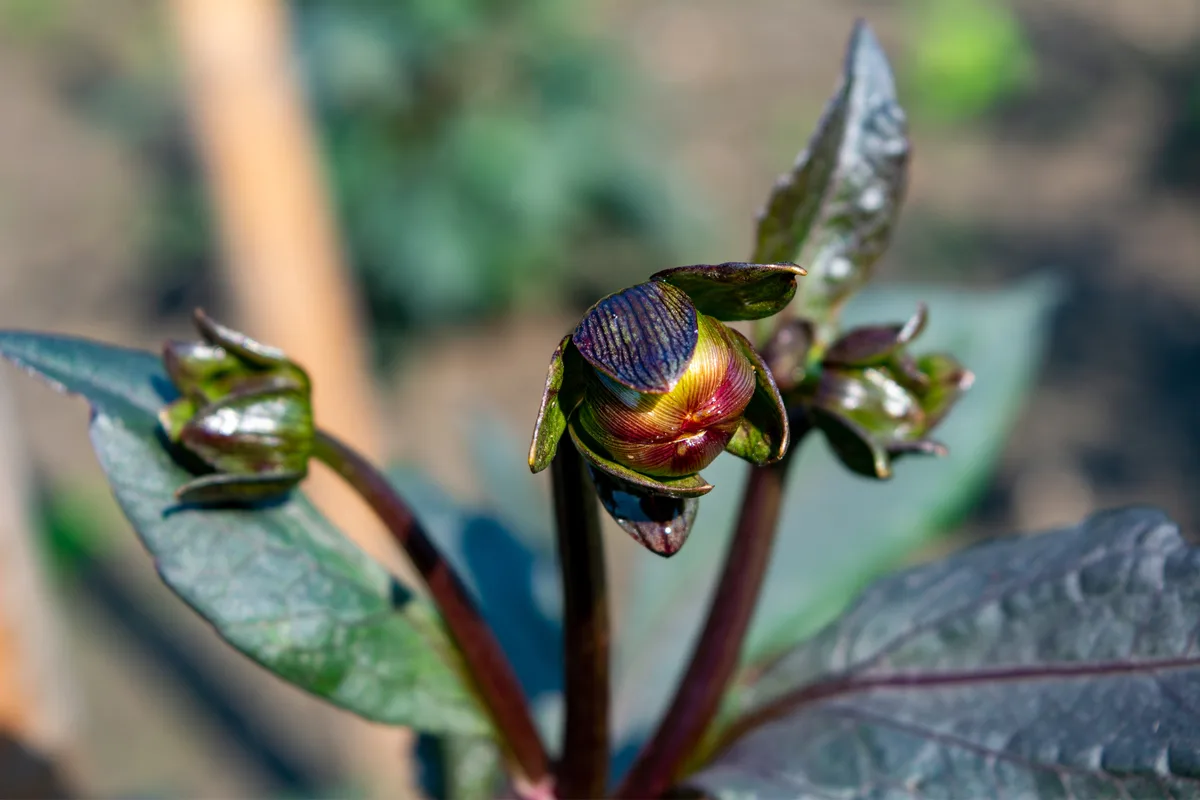
How do you deadhead dahlias?
Deadheading refers to removing spent flowers to encourage the plant to produce more flowers, thus extending your blooming season. Using a sharp pair of pruners, trim off the individual flower stem right at the point where it meets the main stem.
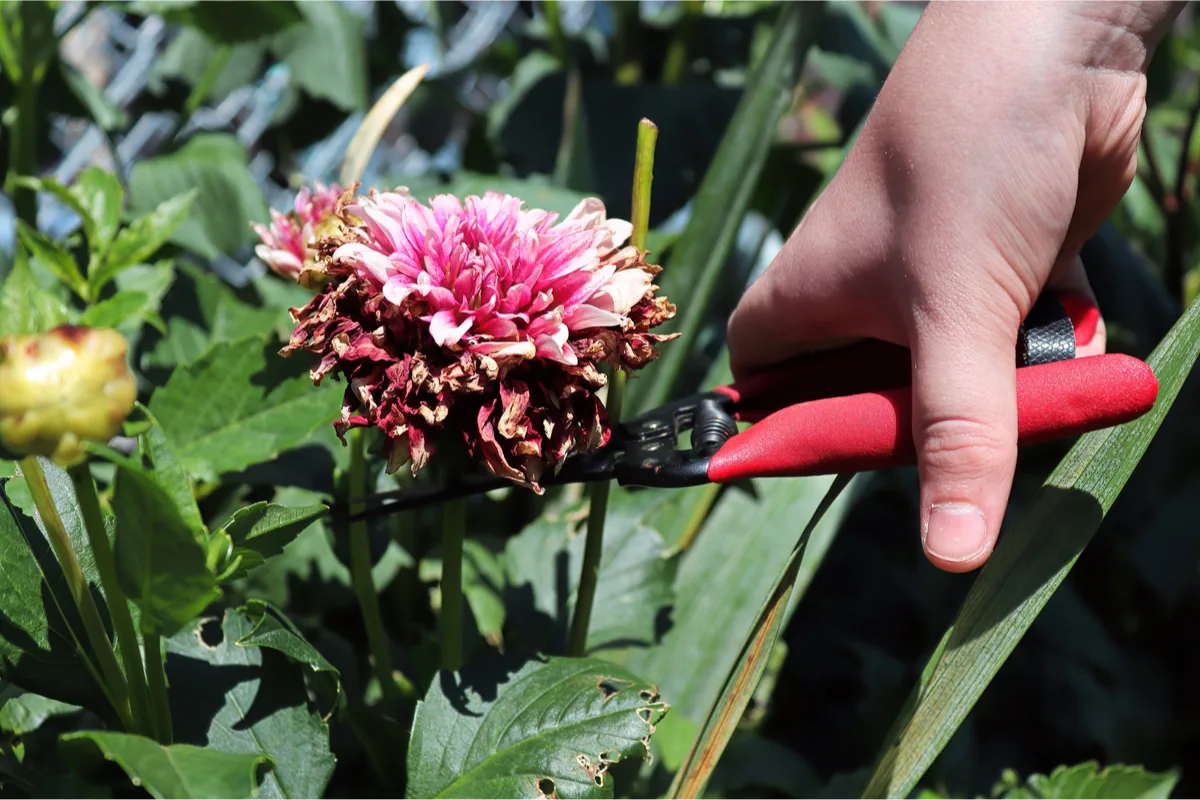
But you don’t have to wait for the flower to be on its way out before you harvest it. Considering the fact that dahlias make beautiful cut flowers that can last up to ten days in a vase, deadheading should come easy even to the most soft-hearted gardener out there. So the more bouquets you make, the more flowers you’ll get, which is undeniably one of the main attractions to growing dahlias.
If you avoid these key mistakes when growing your dahlias, you will be rewarded with an abundance of blooms next season.
